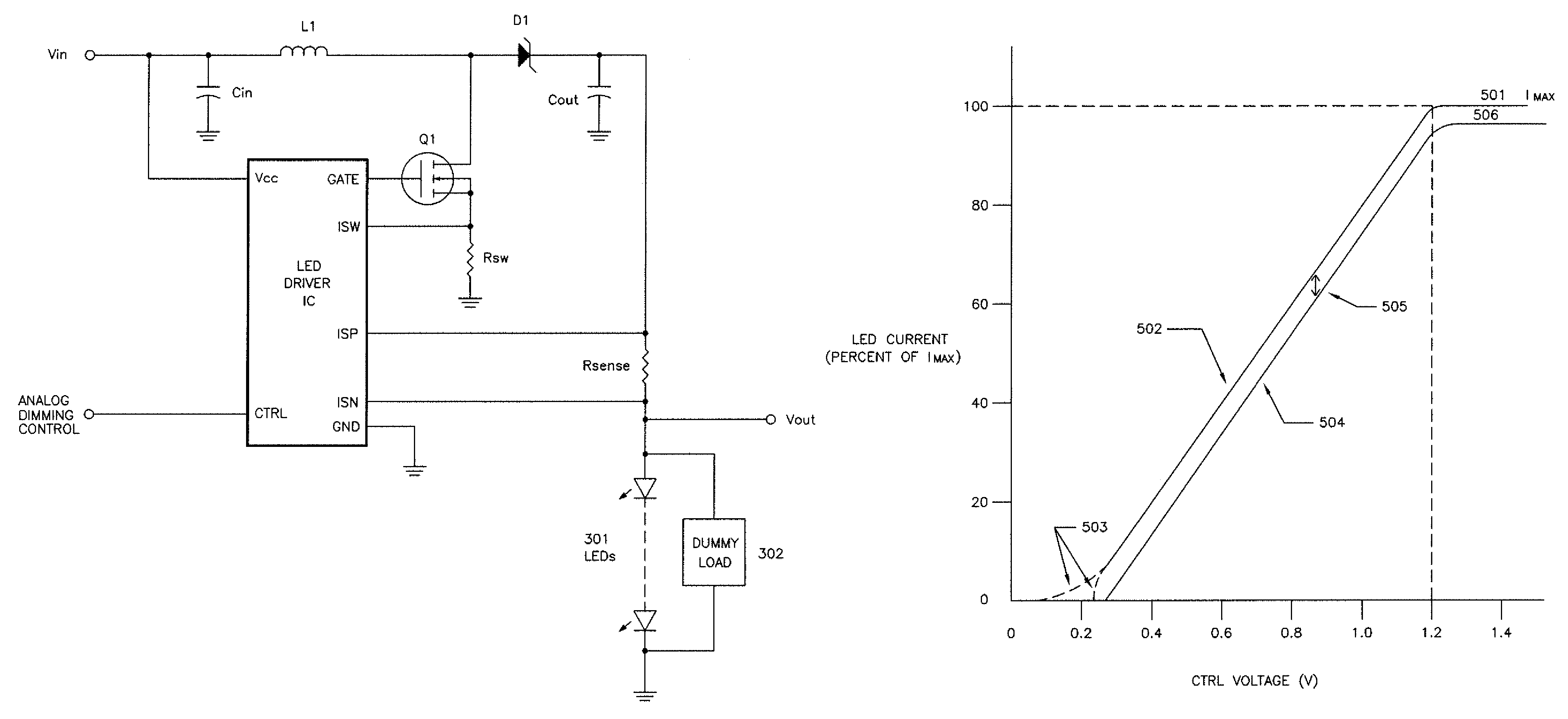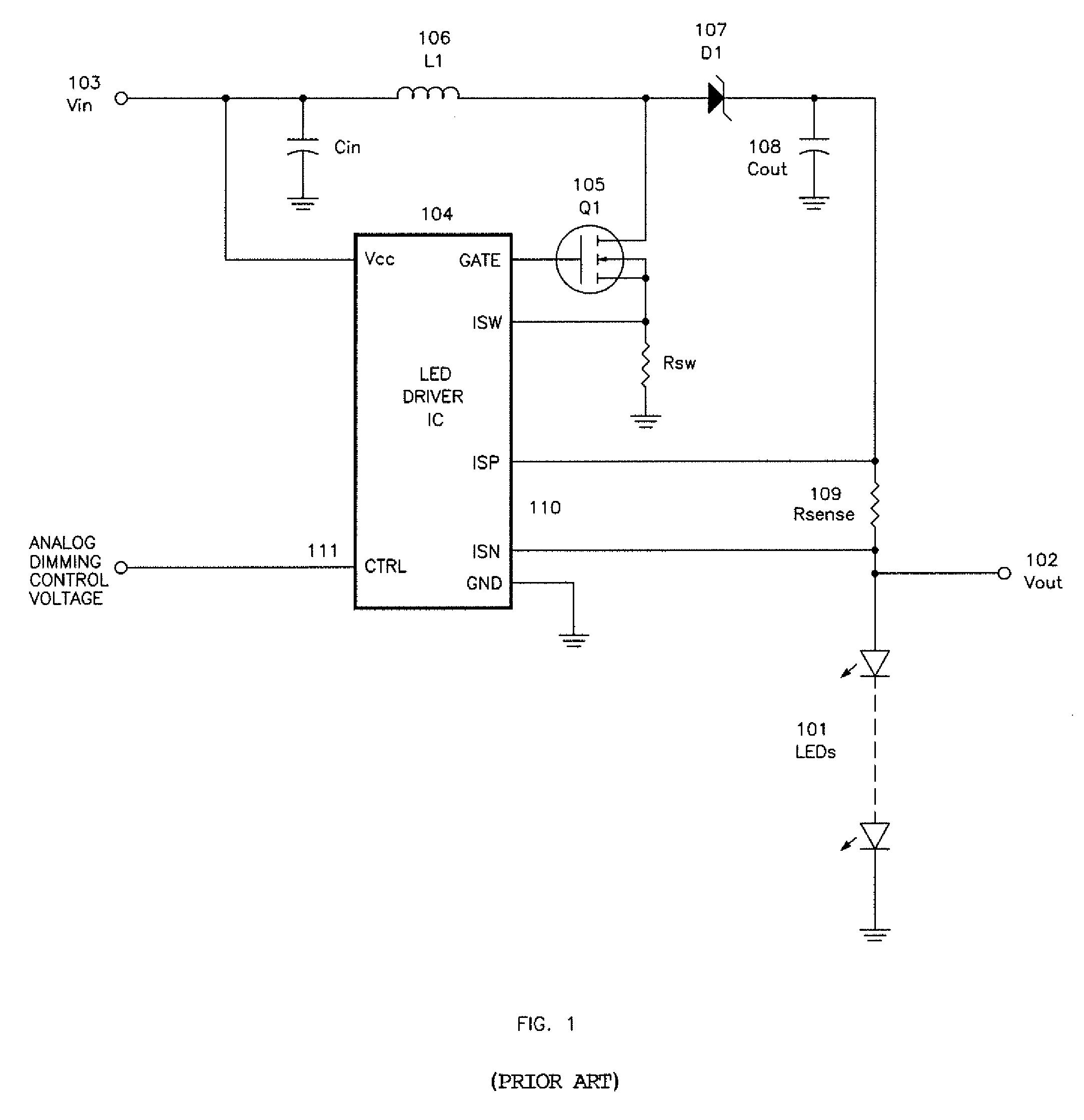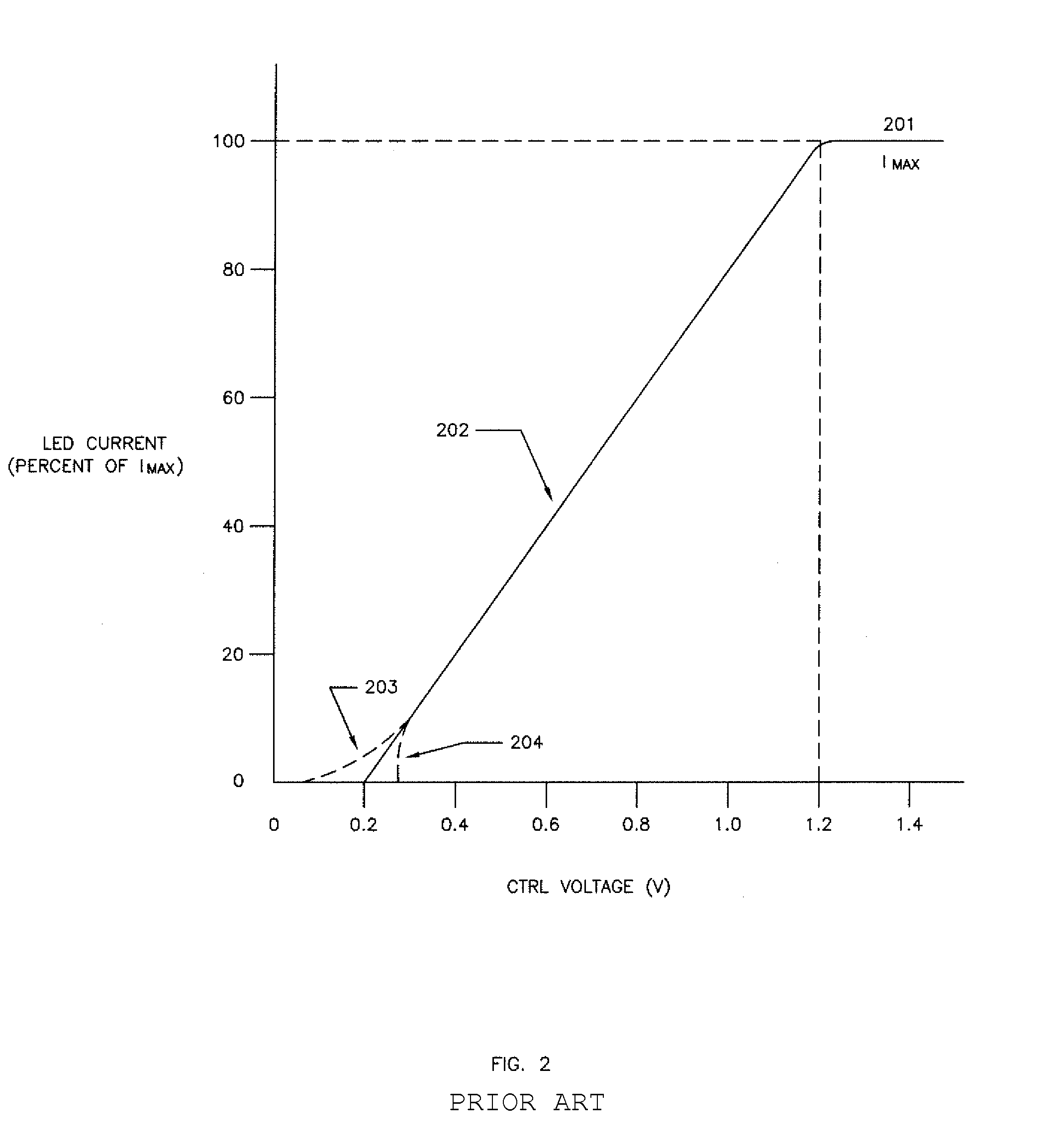Circuit and method for current-based analog dimming of light emitting diode illuminators, with improved performance at low current levels
a technology of light emitting diodes and current-based analog dimming, which is applied in the field of circuit design, can solve the problems of many led driver ics experiencing difficulty in properly regulating the current value, pwm dimming, and diminishing efficiency, and achieve accurate current regulation, improve dimming, and improve performance
- Summary
- Abstract
- Description
- Claims
- Application Information
AI Technical Summary
Benefits of technology
Problems solved by technology
Method used
Image
Examples
Embodiment Construction
[0019]FIG. 1 illustrates a representative prior art LED illuminator design, with a string of LEDs (101) being driven by an LED driver circuit that is designed to provide a regulated, constant current. The LEDs (101) are connected in series, to ensure that the current is identical in each of the LED devices. The constant-current design is relatively insensitive to the number of LEDs in the string, as long as the total voltage drop across the string is lower the designed maximum output voltage of the driver circuit.
[0020]The prior art LED driver circuit shown in FIG. 1 is configured as a boost converter, in which the output voltage Vout (102) is intended to be a higher voltage than the input voltage Vin (103). LED driver circuits may also be configured as buck converter, with Vout designed to be a lower voltage than Vin, or as a buck-boost converter, in which Vout may be either higher or lower than Vin. One skilled in the art of LED driver circuit design will understand that the circu...
PUM
 Login to View More
Login to View More Abstract
Description
Claims
Application Information
 Login to View More
Login to View More - R&D
- Intellectual Property
- Life Sciences
- Materials
- Tech Scout
- Unparalleled Data Quality
- Higher Quality Content
- 60% Fewer Hallucinations
Browse by: Latest US Patents, China's latest patents, Technical Efficacy Thesaurus, Application Domain, Technology Topic, Popular Technical Reports.
© 2025 PatSnap. All rights reserved.Legal|Privacy policy|Modern Slavery Act Transparency Statement|Sitemap|About US| Contact US: help@patsnap.com



